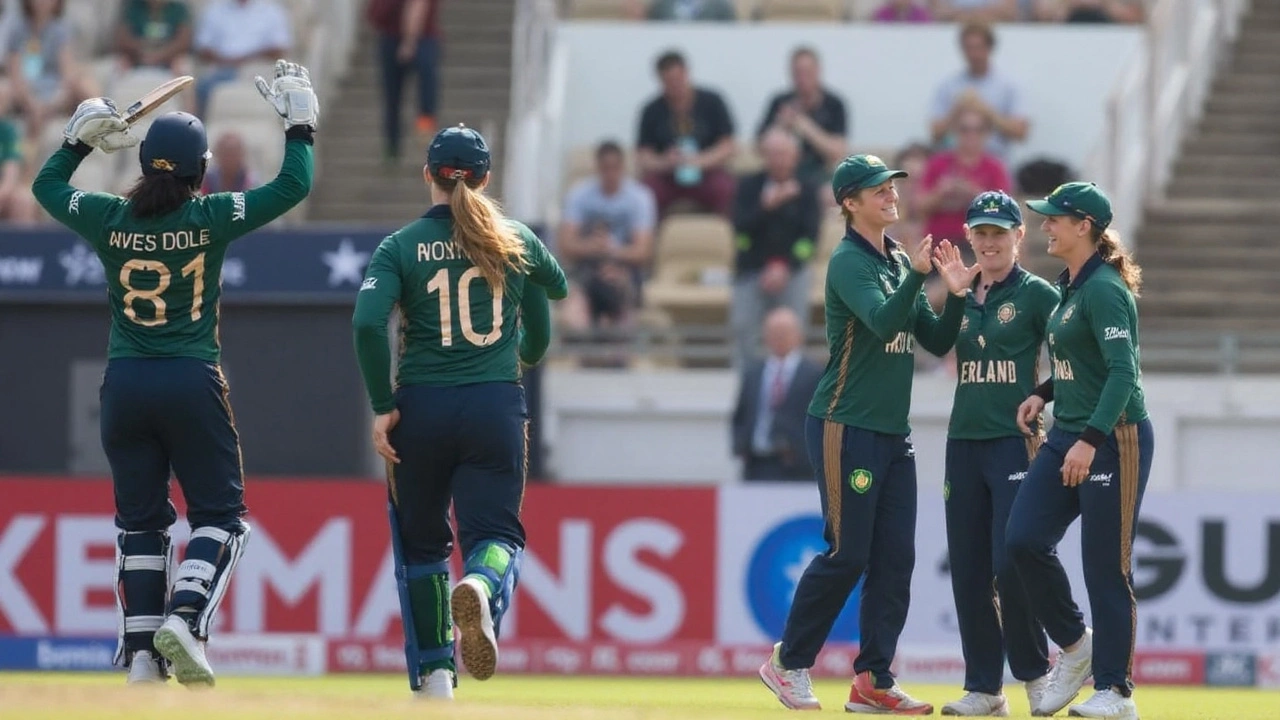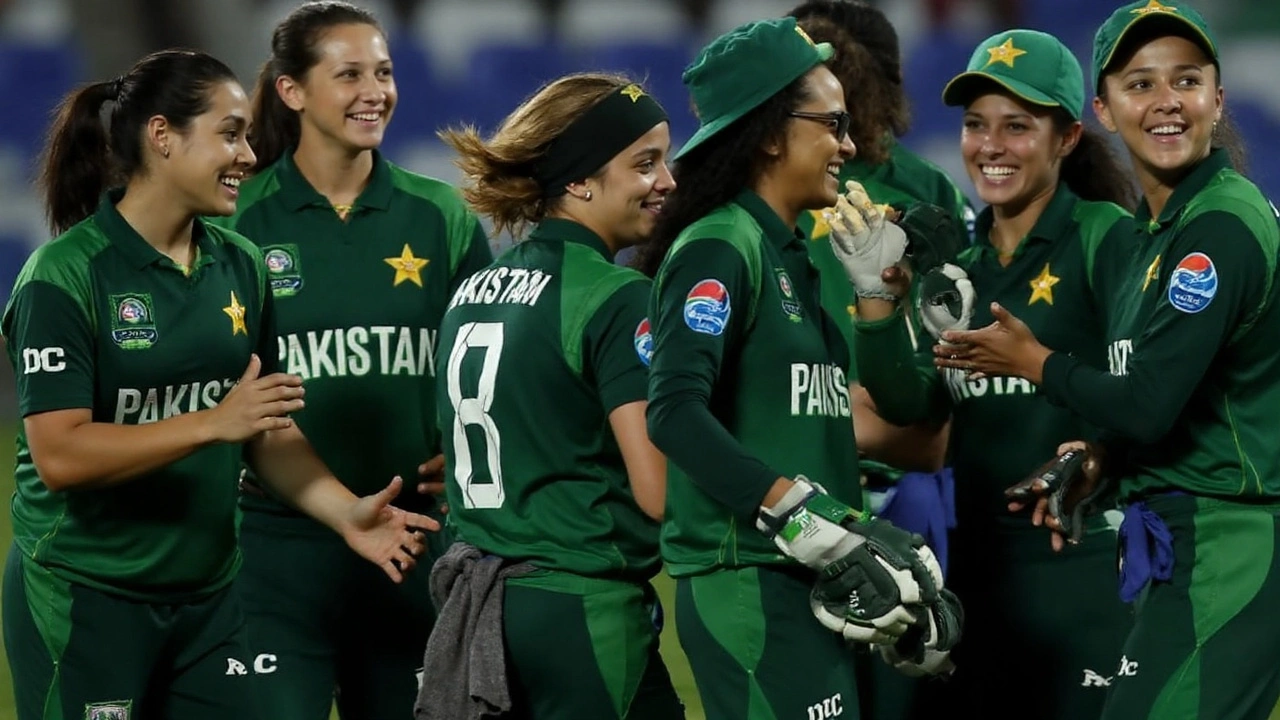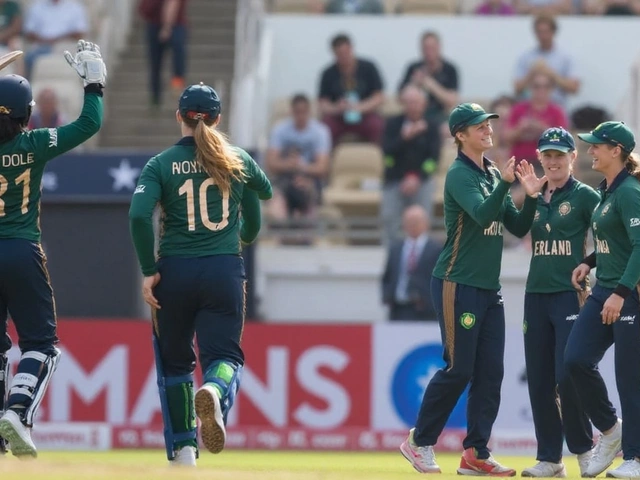
Ireland go 2-0 up after a composed chase at Clontarf
High stakes, high tempo, and a finish to the last ball of the 20th over—this was a proper T20 scrap. Ireland Women beat Pakistan Women by 4 wickets at Clontarf Cricket Club in Dublin, reaching 171/6 to overhaul Pakistan’s 168/6 and take an unassailable 2-0 lead in the three-match series on August 8, 2025. It was a result built on nerve and tempo control, the kind of win that tells you a team is learning how to close big moments.
Pakistan chose to bat and put up a competitive score, thanks to a steady middle-order push and late acceleration from Aliya Riaz and Tuba Hassan. The target—169—was fair and lively on a ground that has seen its share of low-scoring afternoons. This one ran hot from ball one.
Ireland’s reply started the way coaches sketch it in team talks: a stable platform from the openers and a hitter in form taking it deep. Amy Hunter and Gaby Lewis stitched together a 50-run opening stand that eased the early nerves and kept the asking rate under control. From there, Orla Prendergast took charge. Her innings had the two things that turn chases: clean striking and smart risk management. She picked the right bowlers, avoided rash shots after wickets, and kept the scoreboard moving when the field spread.
What stood out was how Ireland handled the middle overs. They didn’t go into a shell, and they didn’t slog blindly either. Singles came regularly, boundaries arrived when fielders were moved, and the required rate sat in that manageable 8–9 zone. Even when Pakistan dragged it back with a couple of timely wickets, Ireland didn’t panic. They still got it done on the last ball of the 20th over.
Pakistan’s bowling had its moments. Short spells of control, a few tight overs, and the occasional sharp change of pace kept Ireland honest. But they needed a stronger squeeze through overs 11–16 and one more breakthrough to rattle the middle order. T20 games at this level often hinge on those tiny gaps—two tight overs, one sharp run-out, a trapping field for the in-form batter. Pakistan were close, just not quite there.

How the game tilted—and what it means for both teams
Pakistan’s 168/6 was built in pairs: steady starts, busy middle overs, and a late kick. Aliya Riaz’s finishing nous and Tuba Hassan’s cameo punches gave the total muscle at the back end. They ran hard, picked gaps, and cashed in when offered width. It wasn’t a smash-and-grab; it was measured batting on a surface that rewarded timing.
Ireland’s bowlers mixed pace nicely. They didn’t let the game drift even as Pakistan found partnerships. A couple of quiet overs after the Powerplay and again at the death kept the chase within reach. That mattered later: every dot ball in the first innings is a nudge towards a simpler chase.
With the bat, the rhythm was clear. Hunter and Lewis laid the table; Prendergast did the heavy lifting. The middle order supported without wasting deliveries—rotating strike, keeping calm after wickets, and making sure one set batter was always on. It was controlled aggression, not chaos.
There was no one magic over that flipped everything. Instead, Ireland won the little battles: field placement against Pakistan’s spinners, running hard inside the circle, and refusing to let dot-ball pressure pile up. In tight T20s, those habits matter more than one outrageous six.
Pakistan will look back at missed chances to build pressure. A dropped single turning into a two, a deep fielder a step too square, a length just a touch full—small margins, big outcomes. Their seamers and spinners did find good patches, and the variations were there, but they needed a killer over when Ireland were resetting after a wicket. Credit to Ireland for not allowing it.
Clontarf had its say too. The outfield ran quick enough to reward placement, and the pitch held together after the Powerplay. Once batters got in, they could trust the bounce and hit through the line. That’s why both sides stayed above eight an over. You don’t see that on every Dublin afternoon.
Zoom out, and this result carries weight for the home side. A 2-0 lead with one to play is not just about a series win; it signals a team building a reliable game plan. The batting spine looks sturdier, decision-making sharper, and the belief obvious. Ireland have shown they can chase sensibly against a disciplined attack and not freeze when the finish line appears.
For Pakistan, there’s no need to rip up plans. The batting template—calm start, busy middle, punchy finish—works. What needs attention is the squeeze phase with the ball and a push for one more wicket in the middle overs. Nail that, and 168 turns into a much taller mountain.
Individual highlights were clear enough even without gaudy numbers. Prendergast played the defining hand. Hunter and Lewis gave her the launchpad. Aliya Riaz, as usual, found the gears late, and Tuba Hassan added spark at both ends of the innings—valuable runs and probing spin.
The crowd got their money’s worth: a tight finish, shifts in momentum, and a chase settled at the very end. For a bilateral series that doubles as preparation for bigger stages down the road, this is the kind of contest coaches love to replay in team meetings. You can point to decision points, praise composure, and still find work-ons for tomorrow.
- Target: 169. Ireland reached 171/6 in exactly 20 overs.
- Both teams scored at more than eight an over—unusual for Dublin and a sign of a truer surface.
- Opening stand: 50 between Amy Hunter and Gaby Lewis, which set the chase up.
What next? The final T20I now becomes a different test. Ireland can push for a clean sweep and try bench options without losing rhythm. Pakistan get a free swing to correct the middle-overs squeeze and hunt early wickets. Expect tactical tweaks: an extra over of spin in the Powerplay, a ring field to cut singles, and clearer plans to the set batter.
Beyond the scoreline, there’s a bigger story brewing. Ireland’s women’s side has been steadily tightening its fundamentals—fielding intensity, strike rotation, and clarity of roles. Performances like these, where execution beats panic, are what carry into global tournaments. Pakistan, experienced and well-drilled, will know they’re a couple of good moments from flipping the script in the dead rubber.
On a day when batters called the shots and the margins were thin, the difference was game sense. Ireland’s hitters kept the target in sight, didn’t waste balls, and trusted their shape under pressure. Pakistan’s bowlers asked questions but couldn’t sustain the choke. Flip one partnership, and we might be talking about a decider instead.
For now, the series is sealed, the confidence banked, and the template clear. The next match will still carry edge—rivalries do that—because both sides know the scoreboard doesn’t tell you everything you need to fix. But it does tell you who owned the big moments in Dublin. And today, in a high-scoring T20 that went the distance, that was Ireland.
Ireland Women vs Pakistan Women will always be a watch for fans who enjoy smart chases and tight finishes. If this game is the benchmark, expect the same energy in the final outing—aggressive starts, busy middle overs, and a chase decided in the last 10 balls. That’s the kind of cricket you remember.







Write a comment